Brain Cancer: Epidemiology, TBI, and New Treatments





Margaret O. Johnson, MD, MPH
Assistant Professor,
Department of Neurosurgery
Duke University School of Medicine;
Staff Physician
Department of Veterans Affairs
National Tele-Oncology Program
Durham, North Carolina
Dr. Johnson has no relevant financial relationships to disclose.





Brain cancer represents a notable health challenge for veterans. The first large-scale study on brain tumors in US veterans showed that the most frequently diagnosed tumors were nonmalignant pituitary tumors, nonmalignant meningiomas, and glioblastomas.1 Exposure to combat-related traumatic brain injuries (TBIs) may contribute to the risk for brain tumors, and further research is ongoing.2,3 A 2024 study demonstrated that veterans with moderate/severe and penetrating TBIs had an increased risk of brain cancer, but previous research in civilians has not echoed these findings.2,4
As our understanding of the connection between TBI and brain cancer evolves, health care initiatives and new research are aiming to serve the veteran population most at risk. Telehealth is being used throughout the VA to help veterans, especially those in rural locations, receive neuro-oncology care.5,6 In terms of research, the DoD and Uniformed Services University have established a Brain Tissue Repository. This program may be better able to explore the TBI/brain cancer connection through veteran brain tissue donation.3
New assays are also being developed to help identify brain cancer faster. Liquid biopsy techniques focused on IDH1 have shown promise.7 In terms of treatment, the IDH1/IDH2 inhibitor vorasidenib prolonged progression free survival in grade 2 IDH-mutant gliomas in clinical trials and was approved by the FDA in 2024.8,9 Although not pertaining directly to the veteran population, a new treatment for pediatric brain tumors also was approved by the FDA in 2024.10 These milestones reflect an encouraging trend in precision medicine, opening doors for more targeted brain tumor therapies and tools across various patient groups.
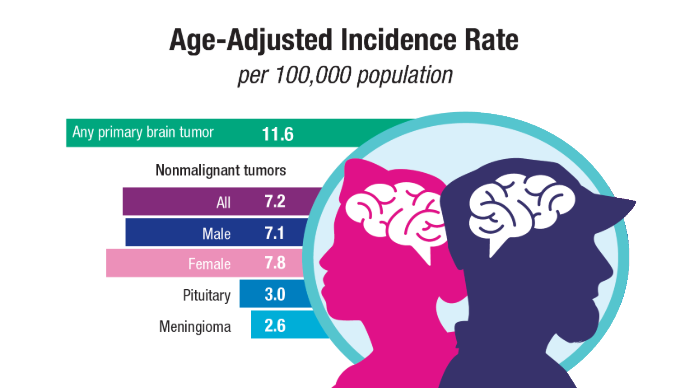 Brain Tumors in Veterans1
Brain Tumors in Veterans1
The first large-scale study of brain tumors in US veterans analyzed data from the VA Cancer Registry and the Central Brain Tumor Registry from 2004 to 2018.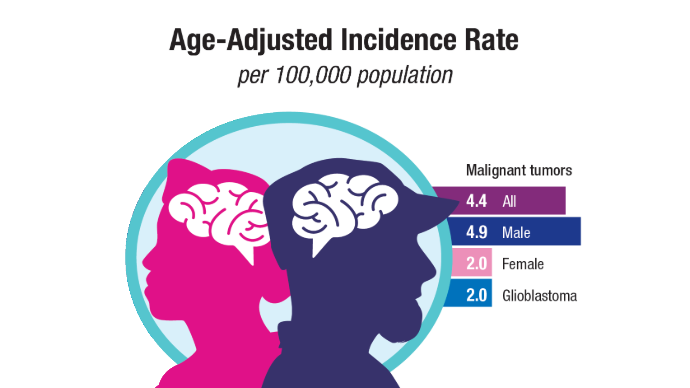 Brain Tumors in Veterans1
Brain Tumors in Veterans1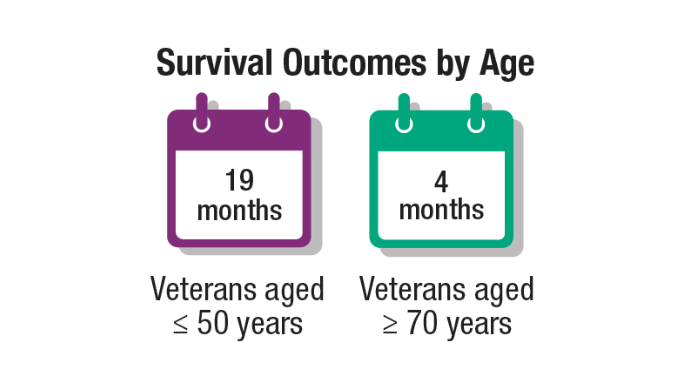 Brain Tumors in Veterans1
Brain Tumors in Veterans1
Compared with civilians, veterans with brain tumors were more likely to be male (93% vs 41% civilians) and older (primarily 60-64 years vs 18-49 years), which is similar to the general characteristics of the veteran population.11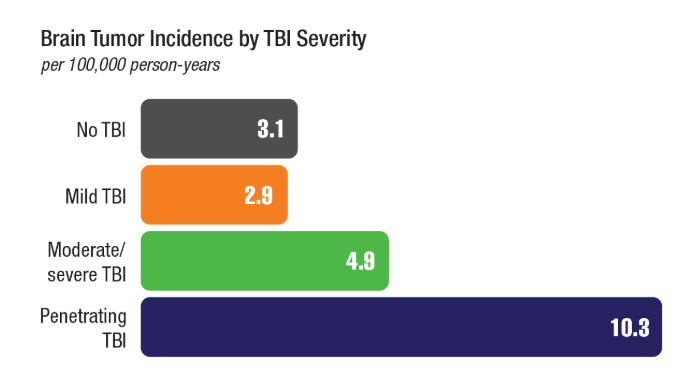 TBI and Brain Tumor Risk in Veterans2
TBI and Brain Tumor Risk in Veterans2
In a study of US veterans from the post-9/11 Iraq and Afghanistan wars, researchers identified an association between TBI and brain cancer.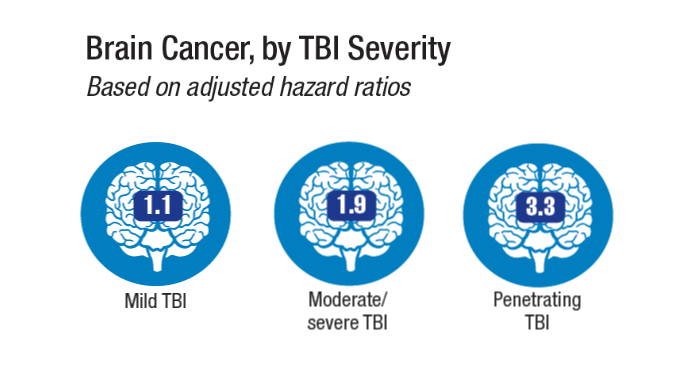 TBI and Brain Tumor Risk in Veterans2
TBI and Brain Tumor Risk in Veterans2
Although mild TBI showed no significant link, the findings suggested that more severe TBI may be associated with risk for brain cancer, highlighting the potential for long-term health consequences of combat-related head injuries.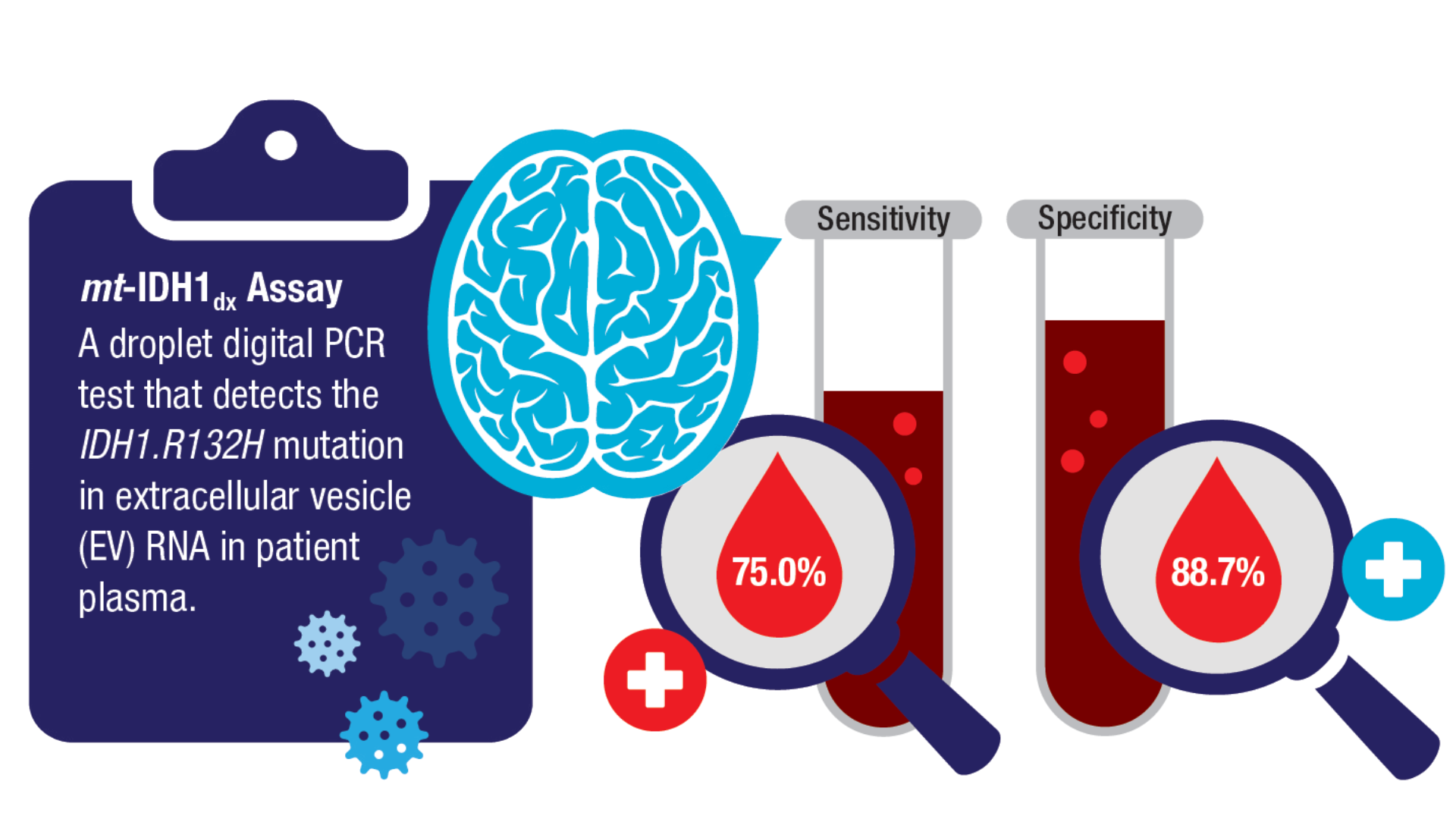 Investigational Blood-Based Assay for IDH-Mutant Gliomas7
Investigational Blood-Based Assay for IDH-Mutant Gliomas7
Neuroimaging followed by tissue confirmation via biopsy or resection is the current standard for diagnosis of IDH-mutant gliomas. Liquid biopsy techniques, which may be faster and less invasive than tissue biopsies, are being explored for glioma, with the mt-IDH1dx assay showing promise in early-stage testing. Beyond diagnosis, these tools could also be used in monitoring disease progression and providing prognostic information. In addition, cerebrospinal fluid-based tests are also being investigated.12 Brain Tumors in Veterans1
Brain Tumors in Veterans1
The first large-scale study of brain tumors in US veterans analyzed data from the VA Cancer Registry and the Central Brain Tumor Registry from 2004 to 2018. Brain Tumors in Veterans1
Brain Tumors in Veterans1 Brain Tumors in Veterans1
Brain Tumors in Veterans1
Compared with civilians, veterans with brain tumors were more likely to be male (93% vs 41% civilians) and older (primarily 60-64 years vs 18-49 years), which is similar to the general characteristics of the veteran population.11 TBI and Brain Tumor Risk in Veterans2
TBI and Brain Tumor Risk in Veterans2
In a study of US veterans from the post-9/11 Iraq and Afghanistan wars, researchers identified an association between TBI and brain cancer. TBI and Brain Tumor Risk in Veterans2
TBI and Brain Tumor Risk in Veterans2
Although mild TBI showed no significant link, the findings suggested that more severe TBI may be associated with risk for brain cancer, highlighting the potential for long-term health consequences of combat-related head injuries. Investigational Blood-Based Assay for IDH-Mutant Gliomas7
Investigational Blood-Based Assay for IDH-Mutant Gliomas7
Neuroimaging followed by tissue confirmation via biopsy or resection is the current standard for diagnosis of IDH-mutant gliomas. Liquid biopsy techniques, which may be faster and less invasive than tissue biopsies, are being explored for glioma, with the mt-IDH1dx assay showing promise in early-stage testing. Beyond diagnosis, these tools could also be used in monitoring disease progression and providing prognostic information. In addition, cerebrospinal fluid-based tests are also being investigated.12 Brain Tumors in Veterans1
Brain Tumors in Veterans1
The first large-scale study of brain tumors in US veterans analyzed data from the VA Cancer Registry and the Central Brain Tumor Registry from 2004 to 2018. Brain Tumors in Veterans1
Brain Tumors in Veterans1 Brain Tumors in Veterans1
Brain Tumors in Veterans1
Compared with civilians, veterans with brain tumors were more likely to be male (93% vs 41% civilians) and older (primarily 60-64 years vs 18-49 years), which is similar to the general characteristics of the veteran population.11 TBI and Brain Tumor Risk in Veterans2
TBI and Brain Tumor Risk in Veterans2
In a study of US veterans from the post-9/11 Iraq and Afghanistan wars, researchers identified an association between TBI and brain cancer. TBI and Brain Tumor Risk in Veterans2
TBI and Brain Tumor Risk in Veterans2
Although mild TBI showed no significant link, the findings suggested that more severe TBI may be associated with risk for brain cancer, highlighting the potential for long-term health consequences of combat-related head injuries. Investigational Blood-Based Assay for IDH-Mutant Gliomas7
Investigational Blood-Based Assay for IDH-Mutant Gliomas7
Neuroimaging followed by tissue confirmation via biopsy or resection is the current standard for diagnosis of IDH-mutant gliomas. Liquid biopsy techniques, which may be faster and less invasive than tissue biopsies, are being explored for glioma, with the mt-IDH1dx assay showing promise in early-stage testing. Beyond diagnosis, these tools could also be used in monitoring disease progression and providing prognostic information. In addition, cerebrospinal fluid-based tests are also being investigated.12
Click to view more from Cancer Data Trends 2025.
,false